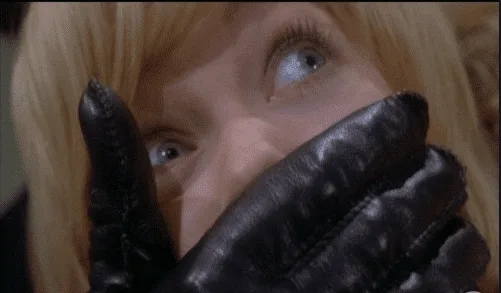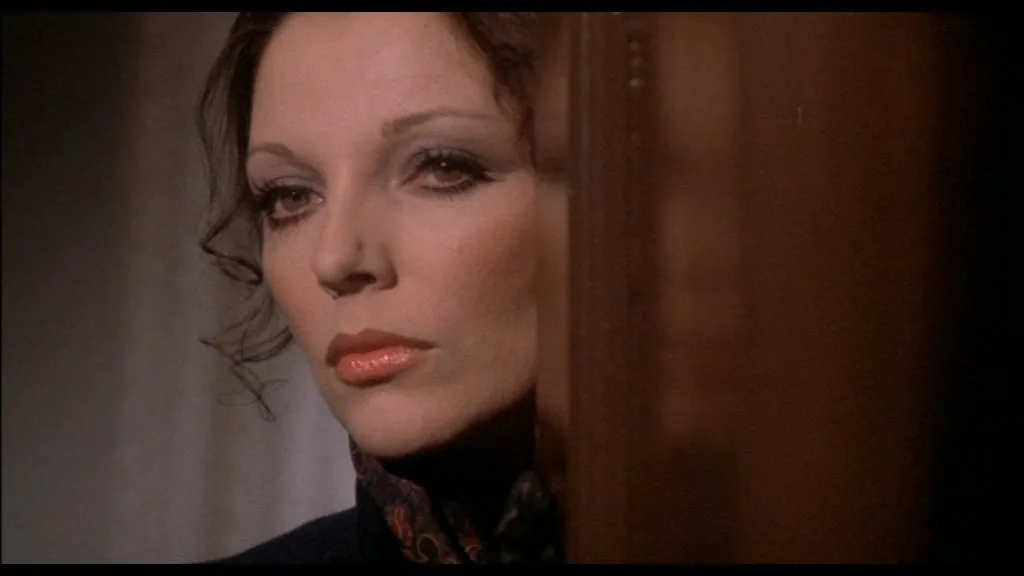
We start with a languorous introductory sequence, with sweeping shots of a boarding school and its grounds, though eventually teasing the viewer that something is seriously wrong here, something which is explained through the course of the film. The subtlety of this revelation, coming in the first few minutes, is one of this film’s strengths; it casts a shadow over the rest of the film, as it indicates that there’s foul play going on and, by the by, we’ll come to understand exactly what form this takes. All of this is unbeknownst to Peggy (Judy Geeson), who is excited to be leaving her rented digs to move into a new home with her husband Robert (Ralph Bates). He’s a teacher, and he’s secured a post at…the boarding school we’ve already seen, living on site in a nearby cottage.
However, the night before she’s due to leave, someone sneaks into her flat through an open window and attacks her (in a sequence which is more reminiscent of a giallo than a Hammer horror, black leather gloves and all). As Peggy struggles, her assailant loses a prosthetic arm before fleeing. Or does he? When Peggy’s landlady comes to find out what all the commotion has been and finds Peggy lying on the floor, she gently insinuates to both Peggy and the doctor on call that the incident must have been all in Peggy’s mind. Peggy had a ‘nervous breakdown’ at some point in the recent past, and she is apparently not fully recovered.
Though shaken, Peggy does leave the next day as planned, and the Hellers begin to settle into their new abode, though Peggy worries that someone has followed her: she swears that she sees someone hanging around outside, and, soon enough, she is attacked again – by what seems to be the same attacker. Now, even Robert seems doubtful of the attack. To make matters worse, the headmaster of the school, Mr. Carmichael (Peter Cushing) is behaving in a strange, even unseemly manner: Peggy does not feel safe, not from him, or from anyone else in the extremely limited social circle she now finds herself in.

Fear in the Night has one of those phenomenal casts which Hammer was able to assemble, though, and there are some surprises along the way, particularly from Ralph Bates. Cushing plays an interesting role here, a seemingly nasty piece of work who even comes across as a bit of a lech at times – which is faintly traumatic, given that Cushing seems to be every horror fan’s favourite gentleman. But it’s Joan Collins who steals the show here, and I only wish she had got more screen time. She’s turned in some great horror performances during her career, although she’s probably better-known for being an on-screen ‘bitch’: well, here she gets to be both, and it’s glorious. More films should have Joan Collins staring down the barrel of a shotgun, I feel.
And how does all of this resolve? Through a few ridiculously implausible plot resolutions, that’s how, albeit with some enjoyable, surprising twists too, before we finally find out what the hell has been going on at this particular school. There’s probably not quite enough cohesion and action to really sustain the film through ninety-odd minutes, but things definitely do gather pace in the last half hour after the patience-testing prelude. Fear of the Night is reasonably enjoyable, but perhaps most noteworthy simply for its radical departure from the Hammer tropes which have served the studio throughout its history. In this respect, it’s an ambitious film which is worth a look. You certainly won’t see it looking better anywhere else: the new Studiocanal restoration looks absolutely great.
Fear in the Night is available to buy on Blu-ray now.
